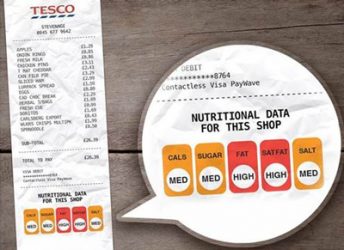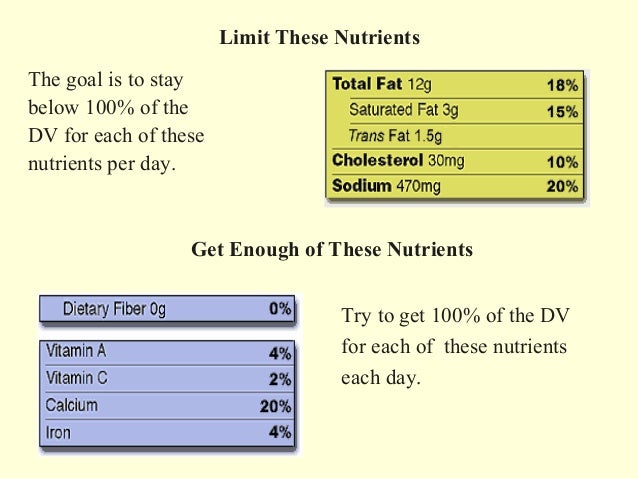42 traffic light nutrition labels
developer.apple.com › app-store › app-privacy-detailsApp Privacy Details - App Store - Apple Developer App privacy details on the App Store. The App Store now helps users better understand an app’s privacy practices before they download the app on any Apple platform. On each app’s product page, users can learn about some of the data types the app may collect, and whether that data is linked to them or used to track them. Red, Amber or Green? Traffic Light Food Labelling Helps in Making ... The traffic light food labelling helped Canadian adults reduce their overall intake of energy, total fat, saturated fat and sodium compared to baseline-calorie intake reduced by 5%, total fat by 13%, saturated fat by 14% and sodium by 6% among Canadians. Men reaped maximum benefits as they consumed 122 fewer calories, 12 g less total fat, 4 g ...
Traffic light nutrition labelling research According to the study, published in the journal Preventive Medicine , a simple colour coded labelling system encouraged customers in a hospital cafeteria in Massachusetts to purchase the most healthy food items.. A European dispute . Such "traffic light" systems are intended to simplify the nutritional value information displayed on the pack, but have been met with some strong criticism ...

Traffic light nutrition labels
'Traffic-light' nutrition labelling and 'junk-food' tax: a modelled ... Methods: For traffic-light labelling, estimates of changes in energy intake were based on an assumed 10% shift in consumption towards healthier options in four food categories (breakfast cereals, pastries, sausages and preprepared meals) in 10% of adults. Traffic light rating system - Wikipedia Product labelling Food and drink. Food may be labelled with a traffic light label showing how much fat, saturated fats, sugar and salt are in that food by using the traffic light signals for high (red), medium (amber) and low (green) percentages for each of these ingredients.Foods with 'green' indicators are healthier and to be preferred over those with 'red' ones. Traffic Light Eating Method: The Best Foods for YOU - Precision Nutrition They use it based purely on their interpretation of nutritional value, to indicate which foods should make up the bulk of your diet (green), which foods you should eat in moderation (yellow), and which foods you should eat infrequently and in small portions (red). And the list is the exact same for everyone.
Traffic light nutrition labels. 'Traffic light' food labels lead to healthier food choices ... - YouTube A participant's purchased being tracked VOICEOVER (in English): "A new study by Massachusetts General Hospital has found that using 'traffic light' colors — red, yellow and green — in labeling food... Traffic Light System Food - TheRescipes.info Traffic-light labelling has been proposed as a public health intervention to reduce chronic disease risk by improving the dietary intakes of consumers [1,2].Traffic-light labels are a form of interpretative front-of-pack (FOP) nutrition rating systems that provide information on the amount of calories and selected nutrients found within a ... 'Traffic Light' Calorie Labels Help People Make Smarter Menu Choices ... Others had a menu with traffic light labels: green lights (indicating meals with 140-400 calories), yellow lights (400-550 calories), and red lights (550-950 calories). A third group saw both ... Traffic light labelling UK - How to apply to your food label It uses visual cues to summarise the nutrient profiles of products (sugar, carbohydrates, salt and fat) giving them a red, orange, green rating based on recommended daily intake levels. The greener the product, the healthier it is suggested to be. How to apply the traffic light labelling to your food label
Traffic Light Labeling System - Consumer Voice The traffic light labeling system uses three colors: RED It indicates that the food is high in fat, sugar or salt. It is best to avoid these kinds of food and can be eaten only rarely.Unhealthy AMBER This indicates that content of fat, sugar or salt is medium in these foods and can be eaten occasionally though not on a regular basis.Moderate GREEN › what-is-liverwurstWhat Is Liverwurst and Is It Good For You? - Nutrition Advance Feb 18, 2019 · Excellent advice and a reminder that finding ways to eat liver – this, and chicken liver pate for example – is important for us. New food labels may give ‘leberwurst’ red traffic lights warnings for fat and salt and saturated fat, but that will not put me off… quite the opposite. 'Traffic light' food labels reduce calories purchased in hospital ... Massachusetts General Hospital. (2019, July 10). 'Traffic light' food labels reduce calories purchased in hospital cafeteria. ScienceDaily. Retrieved May 28, 2022 from ... The effect of 'Traffic-Light' nutritional labelling in carbonated soft ... The regulation included a mandatory traffic-light (TL) supplemental nutritional information labelling system to be displayed on the package of all processed foods for sale in the country. This new labelling system displays a traffic light panel for the product content of sugar, fat and salt in addition to the traditional nutrient declaration label.
'Traffic light' food labels reduce calories p | EurekAlert! For employees who visited the cafeterias most frequently, the estimated reduction in calories equated to a weight loss of up to 2 kg (4.4 pounds) over time. However, Thorndike stressed, "this is ... PDF Traffic Light Labels - peai.org Lesson 1 - Physical Activity, Nutrition & Health PEAI Healthy Eating Pack - Lesson 3 : Traffic Light Labels Remember: the serving size might be less than the whole pack - always check the serving size. If you eat the whole pack you might eat 5 servings. Using GDAs on the Label Traffic-light labels could reduce population intakes of calories, total ... Traffic-light labels are a form of interpretative front-of-pack (FOP) nutrition rating systems that provide information on the amount of calories and selected nutrients found within a specified amount of food (i.e. a nutrient-specific system) [ 3 ]. Traffic light food labels - DNAfit Look for five key points on the label: 1. Energy The terms 'kJ' and 'kcal' (calories) tell you how much energy is in a product. Women need an average of 2,000 kcal a day and men need 2,500 kcal on average. 2. Saturates Saturates is another word for saturated fat. This section tells you about the amount of saturated fat in the product. 3. Salt
Impact of front-of-pack 'traffic-light' nutrition labelling on consumer ... The labelling format recommended by the FSA consists of four separate colour-coded lights indicating the level of fat, saturated fat, sugar and salt in the product. A 'red' light indicates a 'high' level of that nutrient, an 'amber' light indicates a 'medium' level and a 'green' light indicates a 'low' level, with nutrition criteria set by the FSA.
How 'traffic light' labels promote healthier eating - Harvard Gazette "several small, experimental studies have suggested that 'traffic light' labels can be an effective method of promoting healthier choices, but there have been few real-world studies of customers' perceptions and purchasing behaviors in response to this type of labeling," explained lillian sonnenberg of mgh nutrition and food service, the …
Traffic-light food labels - PubMed Traffic-light food labels Med J Aust. 2007 Jan 1;186(1):19. doi: 10.5694/j.1326-5377.2007.tb00781.x. Authors Trevor C Beard, Caryl A Nowson, Malcolm D Riley. PMID: 17229027 DOI: 10.5694/j.1326 ... Food Labeling / methods* Humans Nutritive Value ...
Is the food traffic light labelling system useful? - Patient Traffic light labels The traffic light label was introduced in 2014, as part of an initiative by the government to improve public health. It was designed to give consumers an immediate idea as to whether something is: healthy (green or low) or not (red or high) in terms of fat, sugar or salt. Traffic light system


Post a Comment for "42 traffic light nutrition labels"